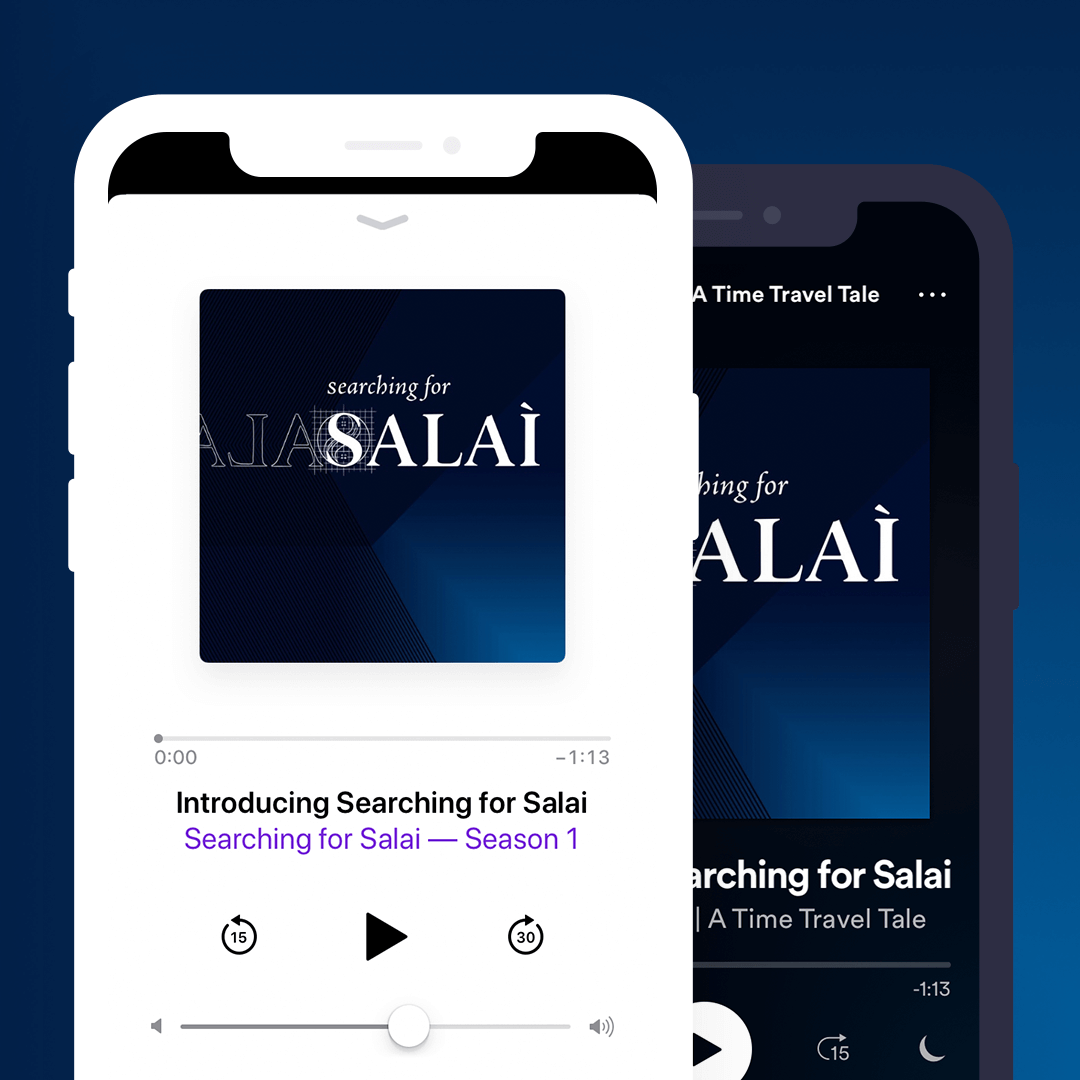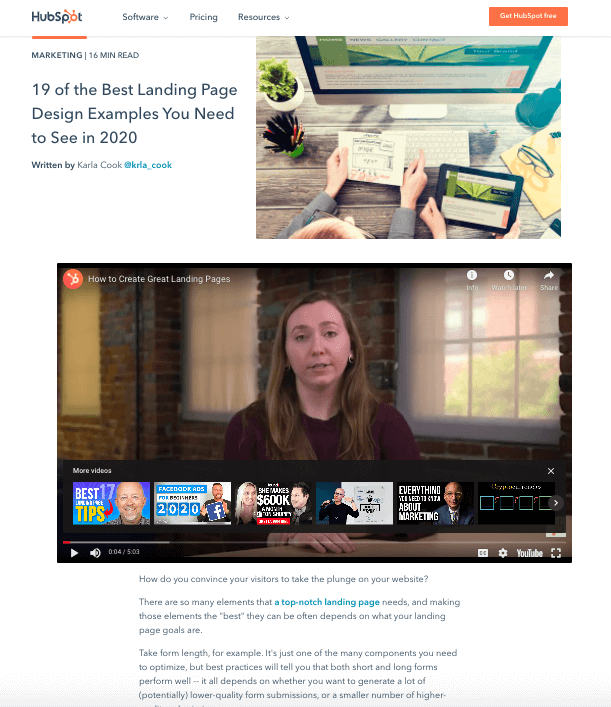Every year we learn something new about content marketing. But there’s one lesson we seem to learn over and over: that taking a risk in marketing is always worth it. Even if it’s scary, even if you don’t immediately win, challenging yourself to try something new will always teach you something valuable and, ultimately, help you win in the long run. That’s why we hold experimentation in such high regard, especially when it comes to content. If you’re getting the same lackluster results from your marketing, it might be time to mix it up. Luckily, one of the easiest ways to experiment is to try a different type of content format. Not sure what that looks like? Here are some of our favorite content trends to try.

5 Content Trends to Try
No matter what stories your brand is telling, there are always new and creative ways to package them. Here, we’re rounding up the top creative formats that can help you connect with your audience in new ways—and upgrade your content game all around.
1) Video
Video has been a great tool for marketers for years, and as the world has turned to Zoom to stay connected in recent years, we’ve seen how important face-to-face time can be. When we can’t be together in person, video gives us a glimpse into each other’s homes, workspaces, and lives, helping maintain our connections and even create stronger bonds. (No doubt that’s why TikTok has exploded, hitting 1 billion users in 2021.)
Example: In the early weeks of quarantine, our team collaborated to create a shot-at-home video that offered our well wishes and solidarity with our community.
That said, video can seem intimidating to produce, especially if you’re thinking about animated motion graphics, 3D, or live action.
Luckily, it doesn’t have to be that complicated. No matter your budget or experience, you can still create high-quality video. Here are 6 ways to create remote video. You can also check out our interactive e-book The Content Marketers Guide to Brand Video.
2) Virtual Events
When the pandemic forced everyone online, it was a huge blow to marketers who relied on in-person events. But, necessity is the mother of invention, and we’ve seen smart brands continue to embrace the virtual space in many creative ways.
Through Zoom, Instagram Live, Facebook, and YouTube marketers hosted Q&As, conferences, keynote speeches, and more. While virtual events may seem limiting because you lack the in-person experience, they also provide unique advantages.
- Greater participation. Without geographic limits, you can include more people—particularly those who may not have had the means or option to participate in an in-person event.
- Convenience. With no physical location (e.g., a hotel banquet hall), you can be more flexible about where, when, and how you interact (e.g., hopping on Instagram live for an impromptu Q&A from your home office).
- Lasting content. Best of all, you can extend the lifespan of your content by recording your events, giving people access to the knowledge in perpetuity.
Consider hosting a webinar, online course, or virtual conference to connect with people, share your knowledge, or engage in other unique ways.
3) Podcasts
Podcasts have been on the rise for years, but they are officially a mainstream media staple. In 2020, Edison Research found that 104 million Americans listen to podcasts (and that was pre-pandemic!). Post-lockdown, Spotify reported that their listeners had doubled their podcast consumption.
While podcasts may not be right for every brand, they can be a great way to connect with your audience. Whether you’re starting a weekly interview series, an educational podcast, or even a fictional narrative, there are all sorts of ways to create high-quality content for your audience’s ears.
Example: We partnered with SAP to create Searching for Salai, a 9-part storytelling series that explored the themes of technology and humanity. It was a unique, creative approach for a tech company, and the risk paid off. The series won Best Podcast/Audio Series and Content Marketing Project of the Year for the Content Marketing Institute’s Content Marketing Awards.
 https://www.columnfivemedia.com/column-five-project-sap-searching-for-salai-a-podcast/
https://www.columnfivemedia.com/column-five-project-sap-searching-for-salai-a-podcast/
4) Microcontent
If you’re one of those marketers who expect budget issues to be a challenge, you need to work with what you have—and make the most of every piece of content you create. Microcontent is one of the easiest ways to do this.
By taking portions of your existing assets and turning them into fresh pieces of content, you can increase the amount of content you create and expand your reach—without using a ton of energy or resources. (We call this a divisible content strategy.)

To do this, look for ways to break existing content into smaller pieces, or combine items to create a larger asset. For example, you might reuse a data visualization from a recent report as a graphic for social, illustrate a quote from an interview, or turn an e-book into an infographic.
5) Multi-format content
Good content marketing is about good communication—telling a story in its most impactful form. However, different people learn more effectively from some formats more than others.
For example, while a reading/writing learner may digest a 3,000-word article easily, a visual learner may prefer a video, and an audio learner may prefer a podcast.
To cater to as many learning styles as possible (including disabilities), think about ways to make your content more inclusive. You might add an infographic to help visual learners understand a concept, or turn a sound bite from a podcast into a video for Instagram.
Example: Hubspot enhances their articles with a variety of visual content, including video recaps, graphics, etc.

The Key to Good Content
Whether you stick with your old standbys or branch out more, remember that the strongest content comes from a strong content strategy. As you plan your content mix, make sure you’ve dialed in…
- Your goals. The key is to create clear, measurable goals. This helps ensure the content you create is purposeful—and gives you a way to track whether or not that content is working.
- Your audience. Make sure you have strong personas to guide your brainstorming.
- Your infrastructure. Some formats require more resources than others, which can make production a bit more challenging. Follow our guide to optimize your content creation process to make sure things go smoothly.
Of course, having the right expertise is also crucial to create stellar content. If you’re not sure what you can create yourself and what you should outsource, here’s how to figure it out. You can also take a look at our best tips to find a good content marketing agency. Or, if that’s all too much, let us take over. We’d be happy to chat about how we can help.





